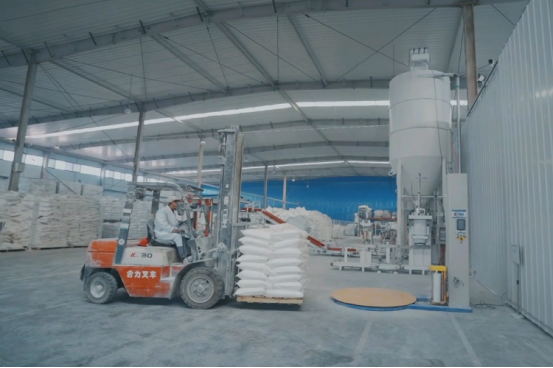Descubra para que é utilizado o hidróxido de magnésio – desde medicamentos e alimentos até retardadores de chama e tratamento de águas residuais. Learn its real benefits, uses, and safety tips.

Para que é usado o hidróxido de magnésio?
Ever wondered why you see hidróxido de magnésio on both medicine labels and industrial chemical specs?
That’s because this one compound wears many hats — medical, comida, environmental, and industrial.
In this guide, I’ll walk you through exactly what magnesium hydroxide is used for, in plain English — no chemistry degree needed.
A Quick Recap: O que é hidróxido de magnésio?
Before diving into its uses, let’s define it quickly.
Hidróxido de magnésio (Mg(OH)₂) is a white, powdery compound made of magnesium, oxygen, and hydrogen.
It’s only slightly soluble in water, which gives it a mild alkaline property — useful in everything from antiácidos to fireproof materials.
Main Uses of Magnesium Hydroxide
Let’s look at where magnesium hydroxide shows up in real life.
Hint: you’ve probably used it without realizing.
1. In Medicine
One of the most well-known uses is in antacids and laxatives.
If you’ve heard of Milk of Magnesia, that’s magnesium hydroxide suspended in water.
How it works:
It neutralizes stomach acid, easing heartburn and indigestion.
It acts as a gentle laxative, drawing water into the intestines to soften stool.
Common uses:
Relieving constipation
Reducing acid reflux
Treating upset stomach
Why doctors like it:
Non-habit-forming
Works naturally
Fewer side effects compared to harsher laxatives
2. In Food and Nutrition
Magnesium hydroxide also appears in food-grade form, used as a food additive and acidity regulator.
Typical uses include:
Stabilizing pH in processed foods
Acting as an anti-caking agent in powders
Serving as a magnesium supplement
You’ll find it in things like:
Cereal mixes
Powdered drinks
Nutritional tablets
Its role is subtle — it’s there to balance acidity and keep products from clumping.
3. In Flame Retardants
Here’s where it gets interesting.
Magnesium hydroxide is a powerful inorganic flame retardant used in plastics, cables, and building materials.
Why it works:
At high temperatures, it releases water vapor and absorbs heat, which slows down fire spread and reduces smoke.
Benefits:
Non-toxic and halogen-free (unlike many chemical retardants)
Environmentally friendly
Improves fire safety in electrical components and construction materials
Common industries using it:
Cable insulation
Rubber and polymer compounding
Coating and paint formulations
4. In Environmental Protection
High-purity magnesium hydroxide is used to treat wastewater and flue gases.
In wastewater treatment:
Neutralizes acidic waste streams
Precipitates heavy metals
Stabilizes pH in biological treatment systems
In air pollution control:
Used in flue gas desulfurization
Helps capture SO₂ emissions from factories
Why industries prefer it:
Safer alternative to caustic soda or lime
Lower operating costs
Less corrosive to equipment
5. In Industrial Manufacturing
Industrial-grade magnesium hydroxide also plays roles in ceramics, paper, and coatings.
Applications include:
Filler for rubber and plastics
Catalyst base material
Coating pigment to improve whiteness
Paper pulp neutralizer
It’s popular because it’s chemically stable, safe to handle, and cost-effective.
Grades of Magnesium Hydroxide and Their Uses
Not all Mg(OH)₂ is made equal — its purity and particle size decide where it fits best.
| Grade | Purity Level | Common Use |
| Industrial Grade | ~90% | Wastewater, plastics, Revestimentos |
| High Purity Grade | >95% | Flame retardants, catalysts |
| Food Grade | >98% | Food additives, supplements |
| Pharmaceutical Grade | ≥99% | Antacids, laxatives |
If you’re sourcing Mg(OH)₂, make sure to request a COA (Certificate of Analysis) to verify purity.
Safety and Handling
Magnesium hydroxide is generally safe and non-toxic, but here are a few handling tips:
Avoid dust inhalation in powder form (use masks).
Store in a dry place — it absorbs moisture easily.
Follow labeled dosage for medical use; more isn’t better.
Use certified grades for food or pharma purposes.
In industrial settings, it’s seen as a green, sustainable chemical alternative.
A Quick Story
When I first worked in a flame-retardant plant, we switched from a halogen-based system to hidróxido de magnésio.
The difference was huge — lower smoke, no toxic fumes, and easier compliance with green-material standards.
A few years later, I found the same compound in my bathroom cabinet — labeled “Milk of Magnesia.”
Same chemistry, totally different world.
That’s the versatility of magnesium hydroxide.
FAQs About Magnesium Hydroxide Uses
1. Is magnesium hydroxide safe for long-term use?
For medical use, yes — when taken as directed. But don’t exceed dosage without medical advice.
2. Can it be used in eco-friendly materials?
Absolutely. It’s one of the best halogen-free flame retardants, ideal for green manufacturing.
3. What’s the difference between food-grade and industrial-grade magnesium hydroxide?
Food grade is highly purified and safe for consumption. Industrial grade is meant for chemical processes only.
4. Is it safe for wastewater treatment plants?
Yes. It’s a non-corrosive neutralizer and safer alternative to strong bases like sodium hydroxide.
5. Does magnesium hydroxide occur naturally?
Yes — the mineral form is called brucite, found in metamorphic rocks and seawater deposits.
Conclusion: Why Magnesium Hydroxide Matters
So, what is magnesium hydroxide used for?
Pretty much everything — from medicine and food to fire safety and environmental protection.
It’s one of those rare materials that are effective, safe, and sustainable across industries.
Whether you’re developing medical products, eco-friendly materials, or industrial systems, hidróxido de magnésio deserves a place on your ingredient list.
Because at the end of the day — it’s not just chemistry, it’s smart design.
 Oxido de magnésio_magnésio hidroxide_magnesium carbonato fabricante-zehui Grupo
Oxido de magnésio_magnésio hidroxide_magnesium carbonato fabricante-zehui Grupo


